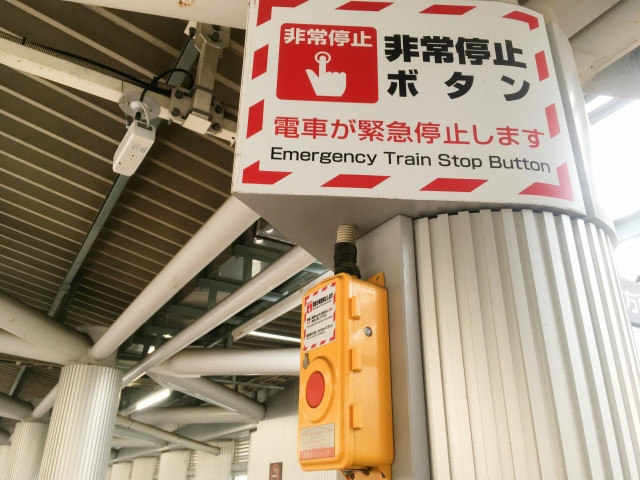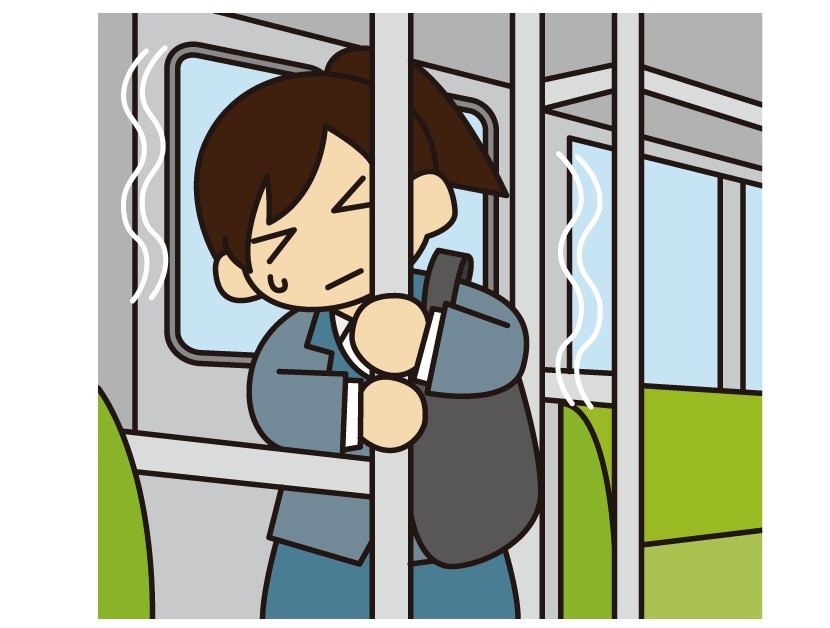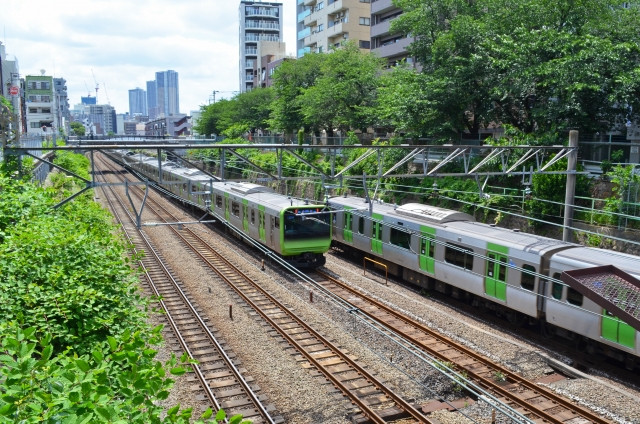Many people have the misconception that “Jinshinjiko (人身事故)” is “train suicides” in Japan. This is not true. "Jinshin Jiko" refers to accidents involving people on railway tracks. Beyond suicide, this includes falls and medical emergencies. In fact, there are many other reasons why train delays and train suspensions happen in Japan.
In this article, we explain what is “Jinshin Jiko” and uncover the misconceptions about train suicides in Japan. We also introduce the other reasons for train trouble in Japan, and what to do during those situations.
Table of Content
- What is “Jinshinjiko”? Uncovering Misconceptions About Suicide
- Reasons for Train Delay and Suspensions in Japan
- What to do When Train Delayed or Suspended in Japan
- Check Your Train’s Operation Status
- Know the Japanese Terms for Train Trouble Announcements
- 5 Ways to Overcome Train Troubles
- 5 Things You can Do if Train Delayed or Suspended in Japan
What is “Jinshin Jiko”? Uncovering Misconceptions About Suicide

“Jinshin Jiko (人身事故)” means “railway accidents involving persons”. Here’s a breakdown of the Kanji that make up the whole Japanese term:
人 (hito) : person, human being
身 (mi) : one’s body, one’s person
事故 (jiko) : accident, incident, trouble
An accurate translation of “Jinshin Jiko (人身事故)” would be “human related accident” or “human body related accident”. This includes not just suicide, but many other types of incidents such as falling into the tracks by accident, climbing on the tracks to pick up fallen items, illegal trespassing on the tracks, last minute boarding resulting in injury, and more.
Misconception that Jinshin Jiko equals to suicides by train.
First things first, we are not discounting the fact that train suicides do happen in Japan. The reason the term “Jinshin Jiko” gained attention, even outside Japan, for train suicides is because of the high number of occurences, but how often do they happen?
What are the number of train suicide incidents in Japan?
According to the Ministry of Land, Infrastructure, Transport and Tourism’s latest released “Information Related to the Safety of Transportation 2021” Report, the total number of train disruptions (suspensions and over 30 minute delays) in the year 2021 is 6,410 incidents.
3,118 incidents (48.6% of total) were caused by “entry into tracks etc (線路内立入り等)” defined as any incident unrelated to natural disaster and train equipment related problems. This includes Jinshin Jiko, animals on tracks, track obstructions, fire, and etc.
Among that number, 536 incidents (8.4% of total train disruption incidents) were due to train suicides.
※ MILT, “鉄軌道輸送の安全に関わる情報(令和3年度)” [Latest as of March 2023]
Writer's Pick
Reasons for Train Delay and Suspensions in Japan
So, aside from Jinshin Jikko, which we now know is not limited to train suicides, what other causes are there for train trouble in Japan?
As shown in the image below, there are 4 categories of reasons for train delay and suspensions in Japan.

① Jinshin Jiko (人身事故) - Human Related Accident

As explained above, Jinshin Jiko is any type of incident that involves a person.
Examples include:
-
Suicide
-
Falling onto tracks due to drunkenness or carelessness
-
Entering tracks to pick up fallen objects, commonly handphones
-
Getting caught by train door due to last-minute boarding resulting in injury
-
Illegally trespassing on tracks
-
Crossing tracks in a no-crossing zone
and more.
What to do if you witness an incident?
If you notice a person on the tracks, immediately press the emergency button. Emergency SOS buttons are fixed on columns and walls along the train platform.
Recent Incident
In January this year, a Jinshin Jiko incident caused quite a buzz in Japan, and was even covered in English news. The emergency button was pressed when a woman was noticed to be walking on the tracks at Shibuya Station. When asked why she did so, the woman replied that she received bad service when asking for directions.
※ J-Cast, “ギャル風女性が線路に侵入...まさかの行動にホーム騒然 渋谷駅で一体何が?JRと目撃者に聞いた” [2023.01.25]
② Aku Tenkou (悪天候) - Bad Weather

Just like flights, bad weather is a common reason for train trouble in Japan. Some seasons in particular are prone to harsh weather, like winter and summer.
Examples include:
-
Heavy Rain (大雨 oo-ame) - rainy and typhoon season
-
Downpour (豪雨 you-u) - rainy and typhoon season
-
Snow (雪) - winter; Tokyo in particular is especially affected by snow pile-ups
-
Heavy Snow (大雪 oo-yuki) - winter; it is dangerous to operate trains when tracks are covered
-
Strong Wind (強風 kyoufuu) - typhoon season
-
Windstorm (暴風 boufuu) - typhoon season
Cancellation of Shinkansen bullet trains during winter is especially common as their high speeds make it dangerous to travel through snowy areas.
Read about Japan’s Climate Zone for a better understanding of weather changes throughout a year in Japan.
③ Shizen Saigai 自然災害 - Natural Disaster

Some of these may cross over with bad weather. Natural disasters are dangerous themselves without adding high-speed trains to the mix, so of course they will be cancelled or delayed.
Examples include:
-
Typhoon (台風 taifuu)
-
Earthquake (地震 jishin)
-
Landslide Disaster (土砂災害 dosha-saigai)
-
Flood (洪水 kouzui)
What if an earthquake happens while riding a train?
The train will come to an emergency stop. Listen for announcements on what to do next, if unsure just follow the rest of the passengers. When the shaking has stopped, the train will continue to the nearest station, or if situation permits, continue as normal. If the train cannot proceed safely, passengers may be asked to evacuate and walk to the nearest station. When in doubt, follow the crowd.
④ Setsubi-jyou no Ijou 設備上の異常 - Equipment Abnormality
Or equipment malfunction.
Examples include:
-
Train doors cannot close
-
Traffic lights at the railroad crossing malfunction
-
Train breakdown or malfunction
-
Track damage
-
Cable broken
-
Electrical malfunction
and more.
What to do When Train Delayed or Suspended in Japan
Check Your Train’s Operation Status
First things first, you need to know your train’s current operation status. Is it operating as normal? Approaching but late? Cancelled with no news of resumption?
But how can you find out?
-
Check the notice board
-
Listen for announcements
-
Ask a station attendant
-
Check on Google Maps, Yahoo! 乗換案内, etc. apps
Know the Japanese Terms for Train Trouble Announcements
Checking the notice board and listening for announcements may be impossible if you do not know the right terms. Below, we have prepared the most important Japanese terms to know for understanding train trouble announcements.
遅延 chi-en means Train Delay

運休 unkyuu, 運転見合わせ unten miawase, 運行見合わせ unko miawase means Train Suspension

再開の見込み saikai no mikomi means Expected Service Resumption

5 Ways to Overcome Train Troubles
There are 5 things you can do if your train is delayed or suspended in Japan:
-
Ask a station attendant for help
-
Use alternative public transport like bus or taxi
-
For students and employees in Japan, get a Certificate of Delay to be excused for being late
-
For commuter pass holders and certain ticket holders, get free alternate transportation
-
If the last train of the day is suspended, and you have no alternative transportation (subway or bus), get a taxi for free
For more details for each, read on below.
5 Things You Can Do if Train Delayed or Suspended in Japan
Without further ado, let’s have a look at the 5 things you can do if your train is delayed or suspended in Japan.
① Ask A Station Attendant for Help
Asking the station attendant is probably the easiest and fastest way to find out what is going on, and to get alternative directions to your destination. The station staff will advise you on any alternative routes available including other public transport you can take. Major train stations might have staff that can speak simple basic English, but for the most part, you will need to do your best to get by with Japanese.
Here are some examples of questions you can ask the station attendant.

② Use Alternative Public Transportation

If you are lucky enough to be stranded at a train station with many connecting lines, then you should have no issue finding a different route. But if not, then your only options are other public transportation, like bus or taxi.
For buses, our article on How to Ride Buses in Japan will come in handy.
And for taxis, try How to Call Taxi in Japan and Taxi Fare in Japan.
③ (Students & Employees) Get a Certificate of Delay

For students and employees in Japan, a late or suspended train can mean being late for work or school, and getting in trouble for that. So, what can you do?
Get a “Chien Shoumeisho (遅延証明書)”, aka Certificate of Delay, issued by the railway company that proves that the train was delayed or suspended. Submit it to your teacher or superior to be excused for being late. This is very important as lateness can reflect badly on your school or work performance and attendance.
Getting a Certificate of Delay is incredibly simple. Either get it at the destination station, or online on the railway companies’ website. Generally, station attendants’ will be handing out Certificate of Delays at the ticket gates for major delays - trains late by over 10 minutes. For short delays, you may need to request for one at the counter, or just get it online.
Some railway companies have made the move to abolish paper certificates, such as Seibu Railway very recently.
Seibu Railway Electronic Certificate of Delays only [2023.03.18]
As of March 18, 2023, Seibu Railway has stopped issuing paper Certificate of Delays which are now only available online on their website.
※ Seibu Railway, “遅延証明書”
④ (Commute Pass Holder) Free Alternate Transportation Provided

What happens when a train is suspended or cancelled in Japan? In many cases, alternate transportation called “振替輸送 (furikae yusou)” is provided. For stations with multiple connecting lines, it is simple enough to redirect people to the other lines. If you are not sure what route to take, simply ask a station attendant how to get to [station name] and they will guide you.
For Teikiken (commute pass) holders, the 振替輸送 (furikae yusou) is provided for free. This is because you have already paid the fare to your destination by purchasing the commute pass. Destinations are limited to those covered by the commute pass.
How to Use 振替輸送 (Furikae Yusou)?

Listen for announcements or ask station attendants.
When “Transfer to Alternative Line” is in operation, do not touch your commute pass to the IC card reader when passing the ticket gate. Instead, show your pass to the station attendant near the ticket gate who will let you pass. Some places require a ticket to be issued to you.
⑤ (Last Train Suspended) Free Taxi Ride
What to do if the last train of the day is cancelled? Not many people, even locals, know about this but you can get a free taxi ride home if no other transportation is available.

To claim the taxi ride, request for a「代行輸送依頼書」(daikou yusou iraishou) from the counter. 「代行輸送依頼書」translates to “Request to Transport on Behalf”, in other words the railway company requesting the taxi company to transport you, the passenger, on behalf of them. Pass the document to the taxi driver, and the taxi fare will be covered by the railway company.
Note that Last Train Suspensions are rare cases, and depending on the circumstances at the time such as whether buses or other lines are available, etc. you may not be able to claim. Further, to save on the taxi fare cost, the railway company may require you to share the taxi with other passengers heading the same way.
To Close

Being thrust into an unexpected situation can be alarming, not to mention the upset at having your plans be suddenly disrupted. By the end of this article, you should be ready or have the basic understanding as to what to do in the abrupt situation when your train is delayed or suspended in Japan. Navigating train trouble can be stressful, but it is also part and parcel of living in Japan.

































